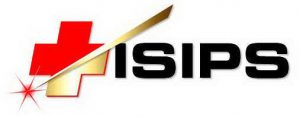ISIPS Unveils 22nd Annual Sharps Injury Prevention Month & Welcomes Roncadelle Operations and Medicalock as New Members
[Spanish Fork, UT, 12/6/2023] – The International Sharps Injury Prevention Society (ISIPS) is thrilled to announce the 22nd Annual International Sharps Injury Prevention Awareness Month in December 2023. This month-long event serves as a platform to raise awareness about the critical importance of using safety syringes to prevent needlestick injuries in healthcare settings.
Sharps injuries, particularly needlestick injuries, pose a significant risk to healthcare workers worldwide. These injuries can lead to the transmission of bloodborne pathogens, such as HIV, hepatitis B, and hepatitis C, causing severe health consequences. The Annual International Sharps Injury Prevention Awareness Month aims to educate healthcare professionals, patients, and the general public about the importance of adopting safety measures to prevent such injuries.
During this month-long event, ISIPS will collaborate with various healthcare organizations, industry leaders, and stakeholders to promote the use of safety syringes and sharps injury prevention practices. Through educational campaigns, webinars, workshops, and social media initiatives, ISIPS will emphasize the significance of implementing safety protocols and technologies to safeguard healthcare workers and patients alike.
In addition to the exciting announcement of the 22nd Annual International Sharps Injury Prevention Awareness Month, ISIPS is delighted to welcome two new members to their esteemed organization. Roncadelle Operations, a renowned healthcare solutions provider, and Medicalock, a leading manufacturer of innovative medical devices, have joined ISIPS in their mission to prevent sharps injuries and promote a safer healthcare environment.
Roncadelle Operations, with its expertise in healthcare solutions, brings valuable insights, experience, and unique safety products to ISIPS. Their commitment to improving patient safety aligns perfectly with ISIPS’ vision, making them an invaluable addition to the organization. To learn more about Roncadelle Operations, please visit their website at www.roncadelle-operations.com.
Medicalock, known for its cutting-edge medical devices, is dedicated to developing innovative solutions that enhance safety in healthcare settings. Their membership in ISIPS further strengthens the organization’s ability to drive change and promote the adoption of advanced sharps injury prevention technologies. For more information about Medicalock, please visit their website at https://surgilock.com/.
ISIPS is excited to collaborate with Roncadelle Operations and Medicalock, as well as existing members, to advance sharps injury prevention initiatives globally. Together, they will work towards creating a safer environment for healthcare professionals and patients, reducing the risk of needlestick injuries, and ultimately saving lives.
For more information about the 22nd Annual International Sharps Injury Prevention Awareness Month visit the ISIPS website at www.isips.org.
About ISIPS:
The International Sharps Injury Prevention Society (ISIPS) is a global organization dedicated to promoting sharps injury prevention and safe healthcare practices. With a mission to reduce the risk of needlestick injuries and bloodborne pathogen transmission, ISIPS collaborates with healthcare professionals, industry leaders, and stakeholders to raise awareness, provide education, and advocate for the adoption of safety measures in healthcare settings.
Contact:
Ron Stoker
Executive Director
ISIPS
801-897-8131
ron@isips.org

